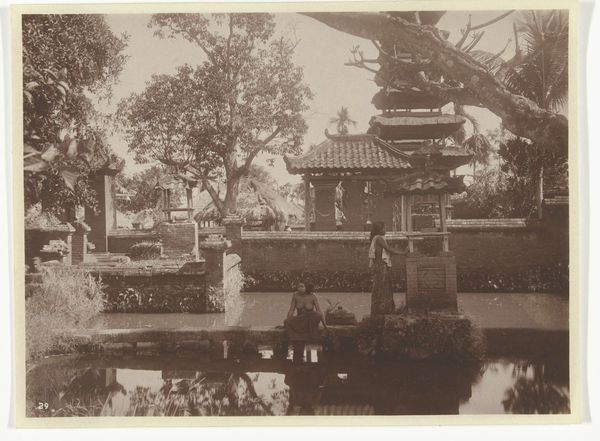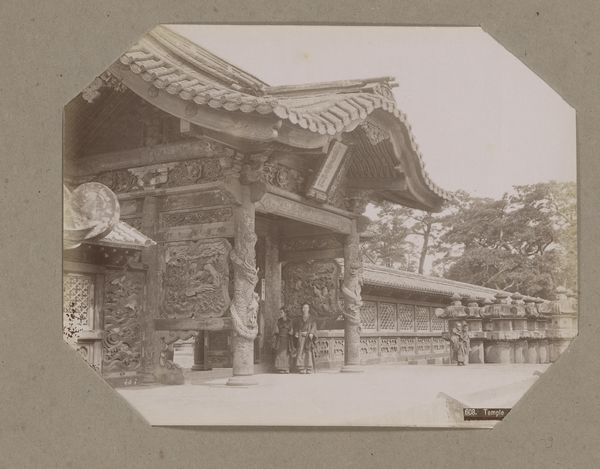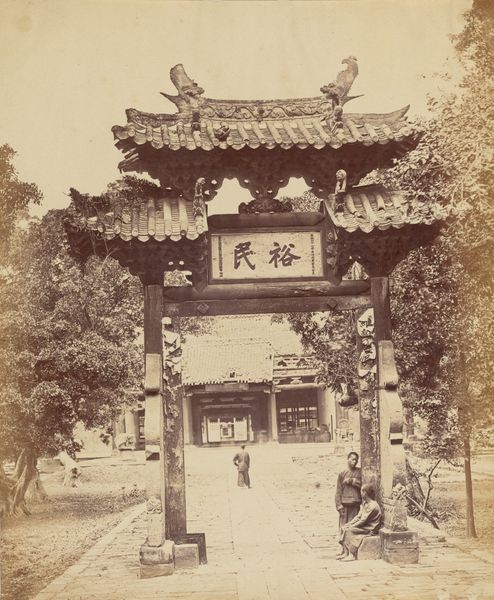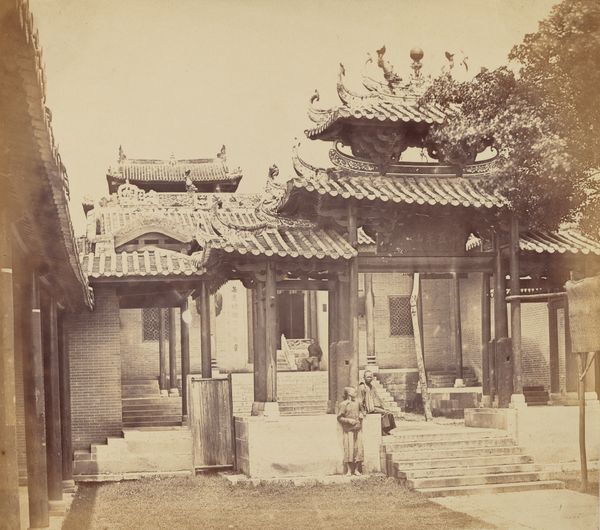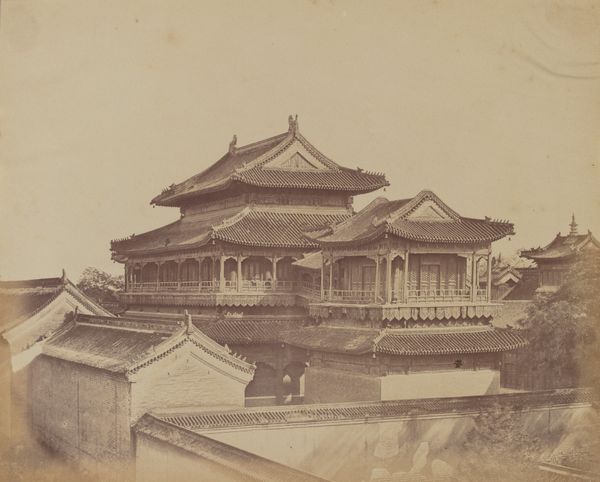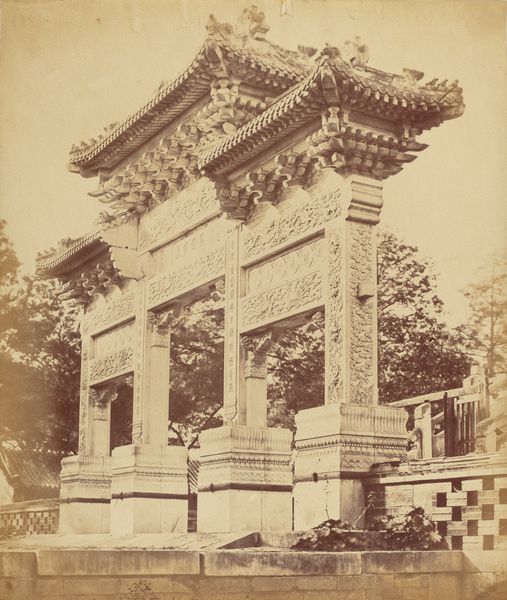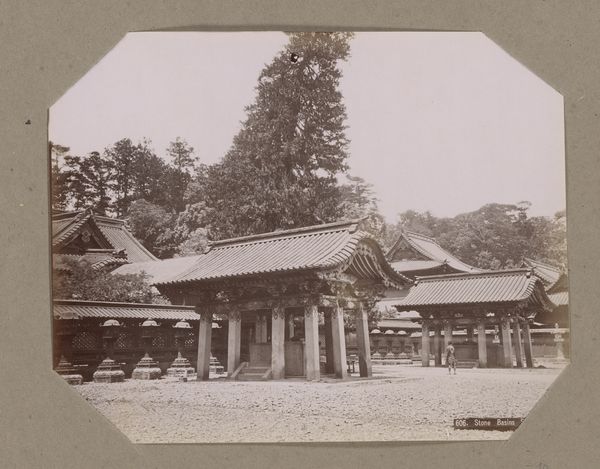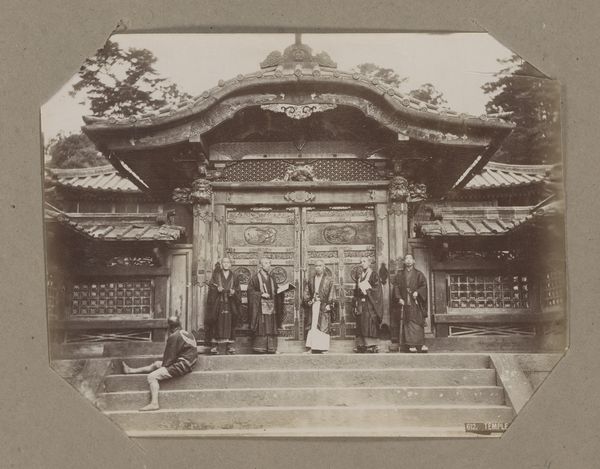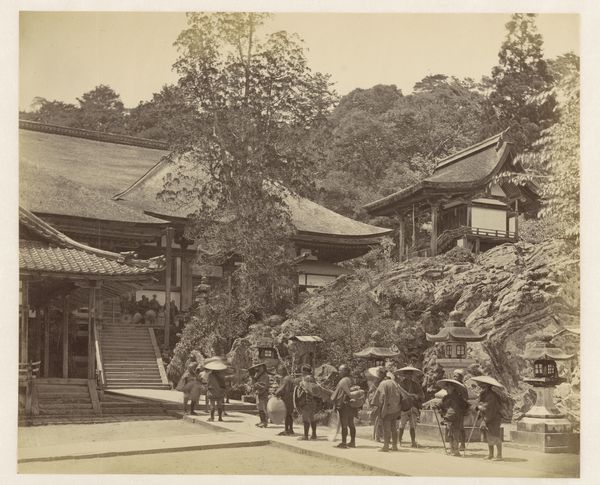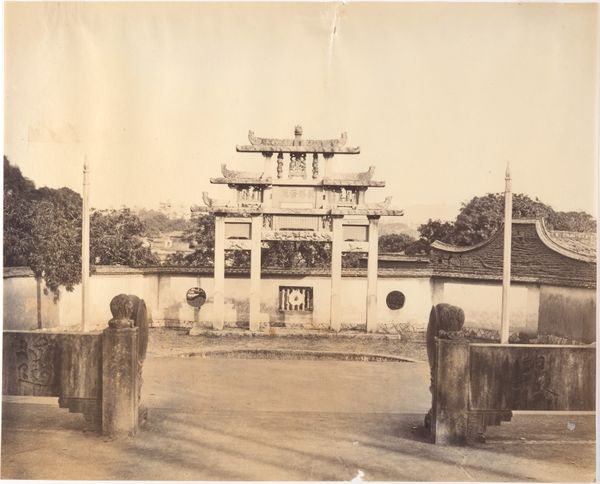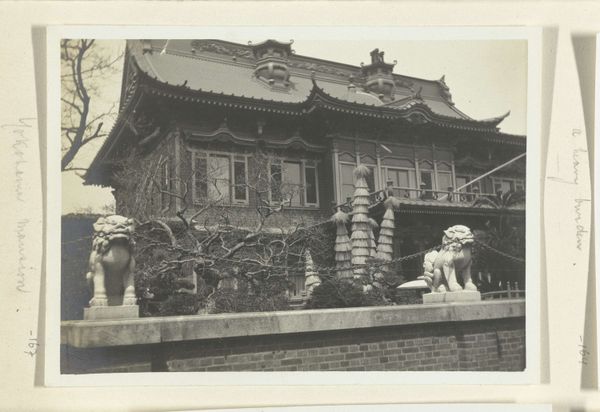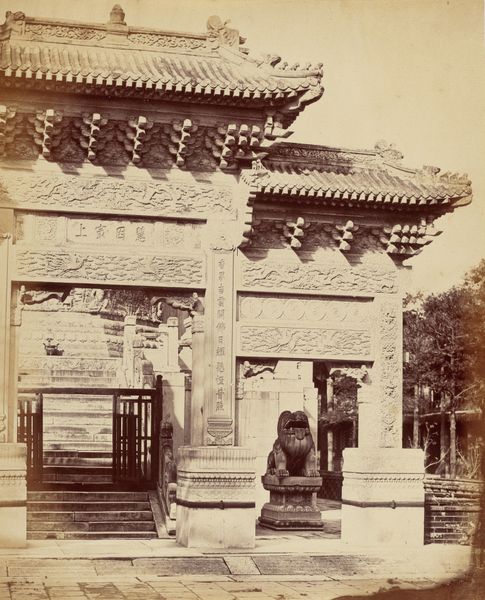
photography
#
portrait
#
asian-art
#
landscape
#
photography
#
orientalism
#
men
#
outdoor activity
Dimensions: Image: 8 1/2 × 10 5/8 in. (21.6 × 27 cm)
Copyright: Public Domain
Curator: The photograph before us, titled "A Tea Pavilion, Canton," was taken in 1869 by John Thomson. It captures a serene scene that invites reflection on cultural exchange. What strikes you first about this image? Editor: A palpable sense of tranquility washes over me. The gentle, muted tones evoke a certain nostalgia, a world captured in sepia where time seems to slow, beckoning us into its delicate composition. The covered roof feels sheltering, both protective and intimate. Curator: Absolutely, the framing invites that introspection. Thomson was working during a period of intense Western engagement with China, one fraught with colonialism. Images like this are valuable records, but we must address the shadow of orientalism present in many works created during that era. What elements of cultural representation do you see? Editor: Immediately my eye goes to the ornate structure of the tea pavilion itself, laden with traditional symbolism, perhaps of harmony and balance, reflected both in the architectural choices and in the ritualistic gathering for tea. Curator: Indeed. Tea culture is central here. The act of gathering around tea becomes symbolic, but its larger social and economic context is important. Tea connected Chinese and Western trade networks. Examining these relationships helps us understand the power dynamics. Editor: Yes, but these signifiers—architecture, ceremony—are not neutral. This aesthetic echoes back towards long cultural lineages; and its visual symbolism presents a calm face during great disruption, an act of placid, though likely incomplete, self-representation. Curator: Exactly. The placidity can be deceiving. And while it might seem neutral at first glance, we should ask for whom was this visual language intended? It reminds us to question visual representation during uneven encounters between cultures. Editor: The question of audience is critical here. This vista is obviously posed. The participants, their garments, their settings—all contribute to the framing, potentially intended to reflect back to an audience far away a certain notion of otherness—packaged within tropes. Curator: By delving into the intersections of politics, economics, and aesthetics, we begin to unveil the intricacies of representation. Understanding this photograph not only helps us appreciate Thomson's artistry, but challenges us to engage with the context of historical interactions between East and West. Editor: A necessary reflection for appreciating and critiquing this subtle, poignant work of constructed portraiture. It’s an evocative scene with complexities to be parsed through its gentle aesthetic veneer.
Comments
No comments
Be the first to comment and join the conversation on the ultimate creative platform.

